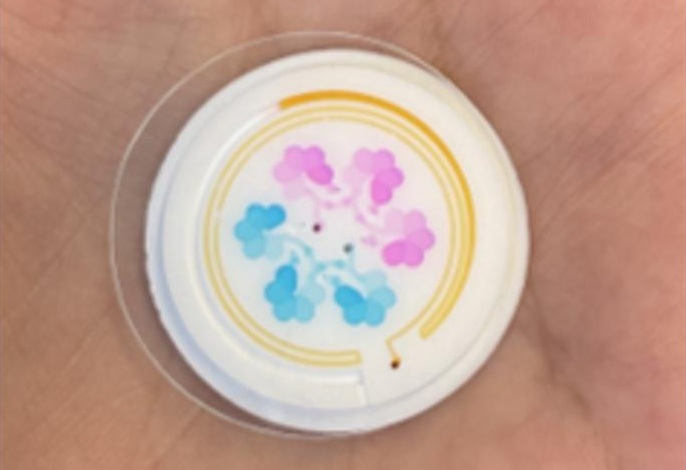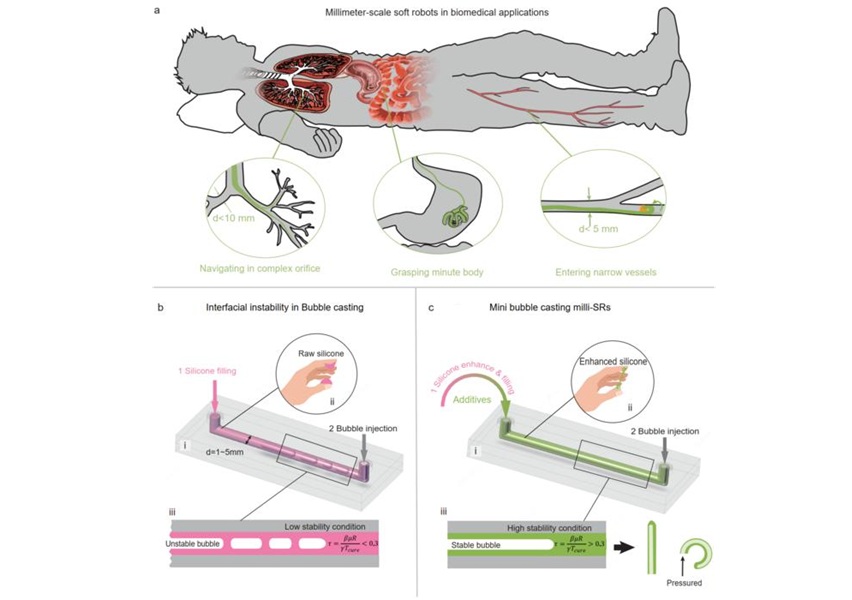Laser Innovations Drive Aesthetic Procedures
|
By HospiMedica International staff writers Posted on 22 Apr 2014 |
Surgical lasers offer newer treatment options that are expanding the clinical focus of cosmetic surgeries from the face to other areas of the body. These are the latest findings of Frost & Sullivan (Frost, London, United Kingdom), an international market research firm.
Advancements in laser technology, which are especially well-suited for noninvasive or minimally invasive aesthetic procedures such as hair removal and skin rejuvenation, have significantly raised the number of procedures performed. Other advanced technologies, such as transdermal focused ultrasound, monopolar radiofrequency (RF), high intensity focused ultrasound, and cryolipolysis are also becoming increasingly popular.
“Newer treatments options are expanding the clinical application focus of procedures to other areas of the body apart from the face,” said Frost technical insights industry analyst Darshana De. “With the baby boomer population aging, more patients are seeking body contouring and body rejuvenation procedures through nonsurgical treatment options that utilize ultrasound or cold energy.”
Due to the growth potential of the cosmetic industry, many new participants are likely to enter the market, while existing companies plan on product line extensions. The cosmetic procedures market is marked by strong competition and pricing pressures. As a result, major players should establish alliances with start-ups that have innovative technologies at hand but lack the funds and the experience to market their solution. Continuing research and development (R&D), product improvement programs, and accurate clinical studies to design new technologies are also crucial for market expansion.
“Intense R&D has already paved the way for the production of multifunctional products,” added Darshana De. “Research has also led to the development of natural cosmetics, which is another fast-growing category reflecting the increased preference of consumers for less synthetic, more natural products.”
Surveys run by different organizations have revealed interesting trends in patient preferences for aesthetic procedures. For example, the United States ranks first among countries performing breast augmentations, while Asian countries such as China, Japan, and South Korea rank among the top five countries performing rhinoplasties.
Related Links:
Frost & Sullivan
Advancements in laser technology, which are especially well-suited for noninvasive or minimally invasive aesthetic procedures such as hair removal and skin rejuvenation, have significantly raised the number of procedures performed. Other advanced technologies, such as transdermal focused ultrasound, monopolar radiofrequency (RF), high intensity focused ultrasound, and cryolipolysis are also becoming increasingly popular.
“Newer treatments options are expanding the clinical application focus of procedures to other areas of the body apart from the face,” said Frost technical insights industry analyst Darshana De. “With the baby boomer population aging, more patients are seeking body contouring and body rejuvenation procedures through nonsurgical treatment options that utilize ultrasound or cold energy.”
Due to the growth potential of the cosmetic industry, many new participants are likely to enter the market, while existing companies plan on product line extensions. The cosmetic procedures market is marked by strong competition and pricing pressures. As a result, major players should establish alliances with start-ups that have innovative technologies at hand but lack the funds and the experience to market their solution. Continuing research and development (R&D), product improvement programs, and accurate clinical studies to design new technologies are also crucial for market expansion.
“Intense R&D has already paved the way for the production of multifunctional products,” added Darshana De. “Research has also led to the development of natural cosmetics, which is another fast-growing category reflecting the increased preference of consumers for less synthetic, more natural products.”
Surveys run by different organizations have revealed interesting trends in patient preferences for aesthetic procedures. For example, the United States ranks first among countries performing breast augmentations, while Asian countries such as China, Japan, and South Korea rank among the top five countries performing rhinoplasties.
Related Links:
Frost & Sullivan
Latest Business News
- Philips and Masimo Partner to Advance Patient Monitoring Measurement Technologies
- B. Braun Acquires Digital Microsurgery Company True Digital Surgery
- CMEF 2025 to Promote Holistic and High-Quality Development of Medical and Health Industry
- Bayer and Broad Institute Extend Research Collaboration to Develop New Cardiovascular Therapies
- Medtronic Partners with Corsano to Expand Acute Care & Monitoring Portfolio in Europe
- Expanded Collaboration to Transform OR Technology Through AI and Automation
- Becton Dickinson to Spin Out Biosciences and Diagnostic Solutions Business
- Boston Scientific Acquires Medical Device Company SoniVie
- 2026 World Hospital Congress to be Held in Seoul
- Teleflex to Acquire BIOTRONIK’s Vascular Intervention Business
- Philips and Mass General Brigham Collaborate on Improving Patient Care with Live AI-Powered Insights
- Arab Health 2025 Celebrates Landmark 50th Edition
- Boston Scientific Acquires Medical Device Company Intera Oncology
- MEDICA 2024 to Highlight Hot Topics of MedTech Industry
- Start-Ups To Once Again Play Starring Role at MEDICA 2024
- Boston Scientific to Acquire AFib Ablation Company Cortex
Channels
Critical Care
view channel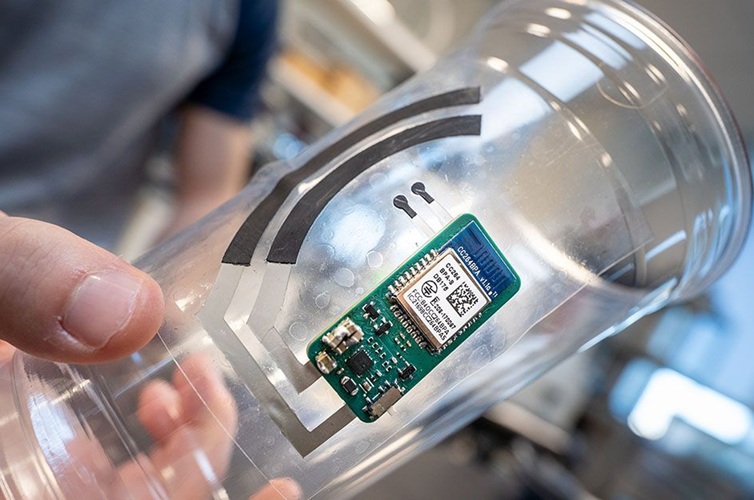
Sweat-Powered Sticker Turns Drinking Cup into Health Sensor
Micronutrient deficiencies affect millions worldwide, yet checking vitamin C levels still requires blood draws, lab equipment, and high costs that prevent regular monitoring. Most people only get annual... Read more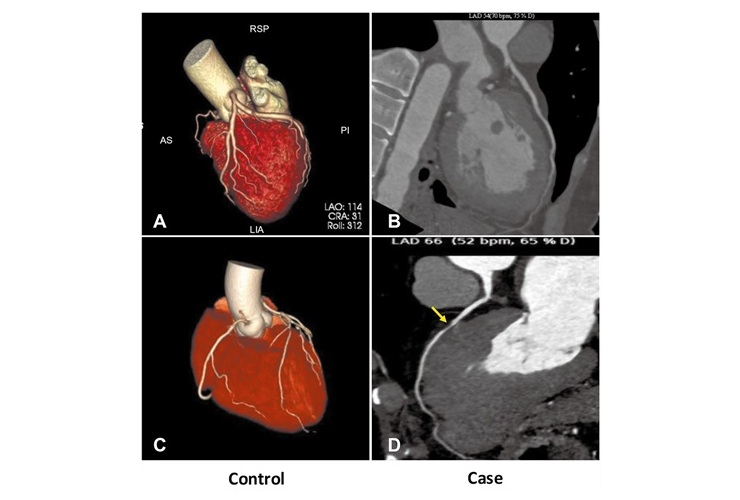
Coronary Artery Stenosis Could Protect Patients from Pulmonary Embolism Effects
Acute pulmonary embolism (PE) occurs when blood clots block vessels carrying deoxygenated blood from the heart to the lungs, triggering a sudden rise in pressure against the right ventricle and risking... Read moreSurgical Techniques
view channel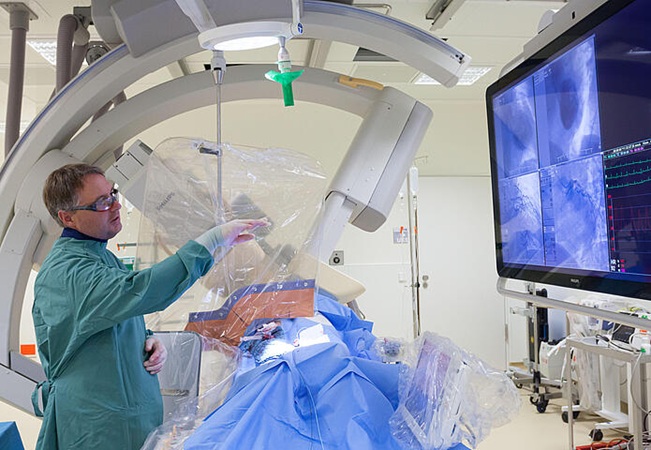
Drug-Coated Balloons Can Replace Stents Even in Larger Coronary Arteries
Narrowed or blocked arteries pose a major global health burden, often leading to heart attacks, heart failure, or stroke when blood flow becomes compromised. Traditional balloon angioplasty can reopen... Read more
Magnetic Kidney Stone Retrieval Device Outperforms Ureteroscopic Laser Lithotripsy
Kidney stone disease affects millions worldwide and often requires ureteroscopic laser lithotripsy, yet fragment removal remains inefficient. Many patients are left with residual pieces that can cause... Read more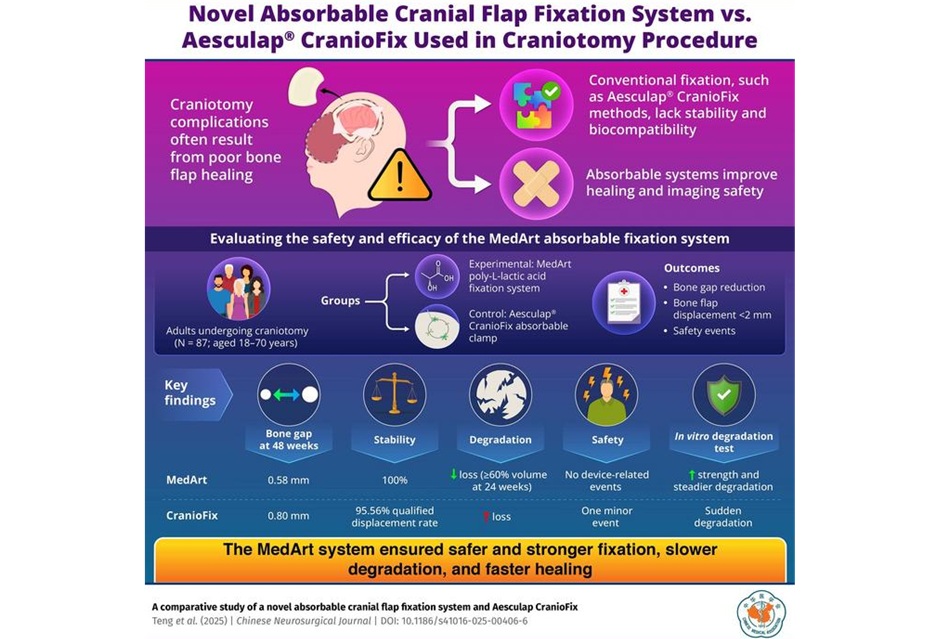
Absorbable Skull Device Could Replace Traditional Metal Implants Used After Brain Surgery
Closing the skull safely after neurosurgery remains a major clinical challenge, as traditional metal or semi-absorbable fixation devices can interfere with imaging, degrade unpredictably, or persist long... Read morePatient Care
view channel
Revolutionary Automatic IV-Line Flushing Device to Enhance Infusion Care
More than 80% of in-hospital patients receive intravenous (IV) therapy. Every dose of IV medicine delivered in a small volume (<250 mL) infusion bag should be followed by subsequent flushing to ensure... Read more
VR Training Tool Combats Contamination of Portable Medical Equipment
Healthcare-associated infections (HAIs) impact one in every 31 patients, cause nearly 100,000 deaths each year, and cost USD 28.4 billion in direct medical expenses. Notably, up to 75% of these infections... Read more
Portable Biosensor Platform to Reduce Hospital-Acquired Infections
Approximately 4 million patients in the European Union acquire healthcare-associated infections (HAIs) or nosocomial infections each year, with around 37,000 deaths directly resulting from these infections,... Read moreFirst-Of-Its-Kind Portable Germicidal Light Technology Disinfects High-Touch Clinical Surfaces in Seconds
Reducing healthcare-acquired infections (HAIs) remains a pressing issue within global healthcare systems. In the United States alone, 1.7 million patients contract HAIs annually, leading to approximately... Read moreHealth IT
view channel










